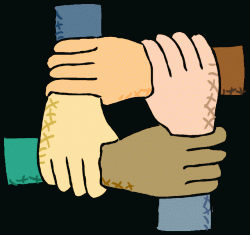Welcome to My Social Studies Website!
Created By: Laura
The inspiration for this unit came from working in a classroom of fourth grade students. The unit focuses on many aspects of immigration and how it relates to students' lives and the history of the United States. First, students learn the basics of immigration and discuss what it means to them. They then dive into the history of immigration in this country and the reasons why people chose to, or were forced to their country of origin. Next, students take on the perspective of newly arrived immigrants and think about their experience after entering a new country. The unit then culminates with a final research project, which requires students to examine their own background and immigration history.
This unit is filled with multiple experiences that strive to connect students with the world around them in a meaningful way. I hope you enjoy it!
This unit is filled with multiple experiences that strive to connect students with the world around them in a meaningful way. I hope you enjoy it!
Essential Questions of the Unit
This unit addresses three main essential questions, with specific questions listed in each lesson:
1. What is immigration?
2. Why do people immigrate? (historically and today)
3. What contributions have different immigrant populations made to the United States?
1. What is immigration?
2. Why do people immigrate? (historically and today)
3. What contributions have different immigrant populations made to the United States?
UW-Madison School of Education Standards Addressed:
· Standard 1: Incorporates Understanding of Human Learning and Development
· Standard 3: Demonstrates Sophisticated Curricular Knowledge
· Standard 5: Explains and Justifies Educational Choices
· Standard 6: Connects School and Community
· Standard 7: Understands and Adapts to Multiple Forms of Communication
· Standard 8: Employs Varied Assessment Processes
· Standard 9: Manages Learning Environment
· Standard 10: Employs Varied Instructional Strategies
· Standard 11: Uses Technologies
· Standard 12: Accommodates for All Students
· Standard 13: Is a Reflective Practitioner
· Standard 3: Demonstrates Sophisticated Curricular Knowledge
· Standard 5: Explains and Justifies Educational Choices
· Standard 6: Connects School and Community
· Standard 7: Understands and Adapts to Multiple Forms of Communication
· Standard 8: Employs Varied Assessment Processes
· Standard 9: Manages Learning Environment
· Standard 10: Employs Varied Instructional Strategies
· Standard 11: Uses Technologies
· Standard 12: Accommodates for All Students
· Standard 13: Is a Reflective Practitioner
Madison Metropolitan School District (MMSD) Standards Addressed:
History
· Construct a timeline that traces basic historical events related to the developmental growth of the United States
· Explain how other regions of the world influenced the history of the United States
· Use reference and information research skills to gather and organize information
Behavioral Science
· Compare and contrast individual perspectives and differences
· Compare personal cultural history with other diverse cultures
· Give examples of valuable contributions to the United States made by many cultural, ethnic, and racial groups
· Give examples of the importance of multiple viewpoints for understanding people, events, and issues.
Language Arts
· Make connections with text by activating prior knowledge before, during, and after reading
· Synthesize by connecting new information with prior understandings
· Infer and evaluate author’s purpose
· Interpret text from various points of view
· Construct a timeline that traces basic historical events related to the developmental growth of the United States
· Explain how other regions of the world influenced the history of the United States
· Use reference and information research skills to gather and organize information
Behavioral Science
· Compare and contrast individual perspectives and differences
· Compare personal cultural history with other diverse cultures
· Give examples of valuable contributions to the United States made by many cultural, ethnic, and racial groups
· Give examples of the importance of multiple viewpoints for understanding people, events, and issues.
Language Arts
· Make connections with text by activating prior knowledge before, during, and after reading
· Synthesize by connecting new information with prior understandings
· Infer and evaluate author’s purpose
· Interpret text from various points of view
NCSS Standards Addressed:
· Culture
· Time, continuity, and change
· People, places, and environment
· Individual development and identity
· Individuals, groups, and institutions
· Power, authority, and governance
· Global connections
· Time, continuity, and change
· People, places, and environment
· Individual development and identity
· Individuals, groups, and institutions
· Power, authority, and governance
· Global connections

